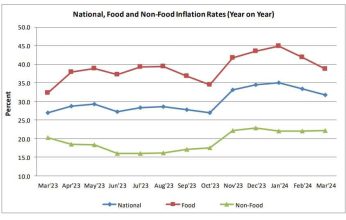Informal maize Exports down 73%
Informal exports of maize, mostly into Tanzania through Mbirima Border, declined by 73 percent in October, the Famine and Early Warning Systems (FewsNet) has said.
In its November 2020 to January 2021 Informal Maize Trade Report, the USaid-funded network, partially attributed this to the recent harvest of the crop in neighbouring Tanzania.
However, imports of maize, largely from Zambia and Mozambique, increased by 19 percent between September and October this year.
Reads the report in part: “At around 5 000 metric tonnes, October import volumes were 82 percent higher than the five-year average likely due to increased production and export volumes from Zambia over the years, previous poor seasons in the region, which reduced trade in those years and better access to markets within Malawi for some farmers along the border.”

Meanwhile, prices of the staple crop across most FewsNet-monitored markets increased by between five and 17 percent in October 2020 relative to the previous month, peaking at between K150 and K227 per kilogramme (kg).
At this rate, maize prices in October were trending at levels of five to 39 percent below their respective 2019 levels and five to 36 percent above the five-year average, according to the report.
Spot-checks in some of the produce markets in Blantyre show that maize is selling at an average price of K220 per kg or K11 000 per 50 kg bag, which is above the government-set minimum buying price of K200 per kg or K10 000 per 50kg bag.
The increase in prices in October are in line with typical seasonal trends as increasing number of households have run out of maize and become reliant on market purchases.
As part of the food component, maize traditionally impacts the country’s economy as it constitutes 45.2 percent of the consumer price index—an aggregate basket of goods and services for computing inflation.
In October, Malawi’s year-on-year inflation rate increased by 0.4 percentage points to 7.5 percent on account of rising food and non-food prices.
Meanwhile, the Reserve Bank of Malawi projects food inflation will rise in the fourth quarter (October to December), albeit marginally than earlier anticipated, reflecting downcast demand due to the Covid-19 pandemic, commencement of maize sales by Agricultural Development and Marketing Corporation and the effects of high food prices in 2019.
The average inflation rate for the quarter is projected at 7.3 percent, which is 3.3 percentage points below the Third 2020 Monetary Policy Committee forecast.
Consumers Association of Malawi executive director John Kapito said the rising maize prices are coming at a time most consumers have had reduced incomes due to the Covid-19 pandemic.





